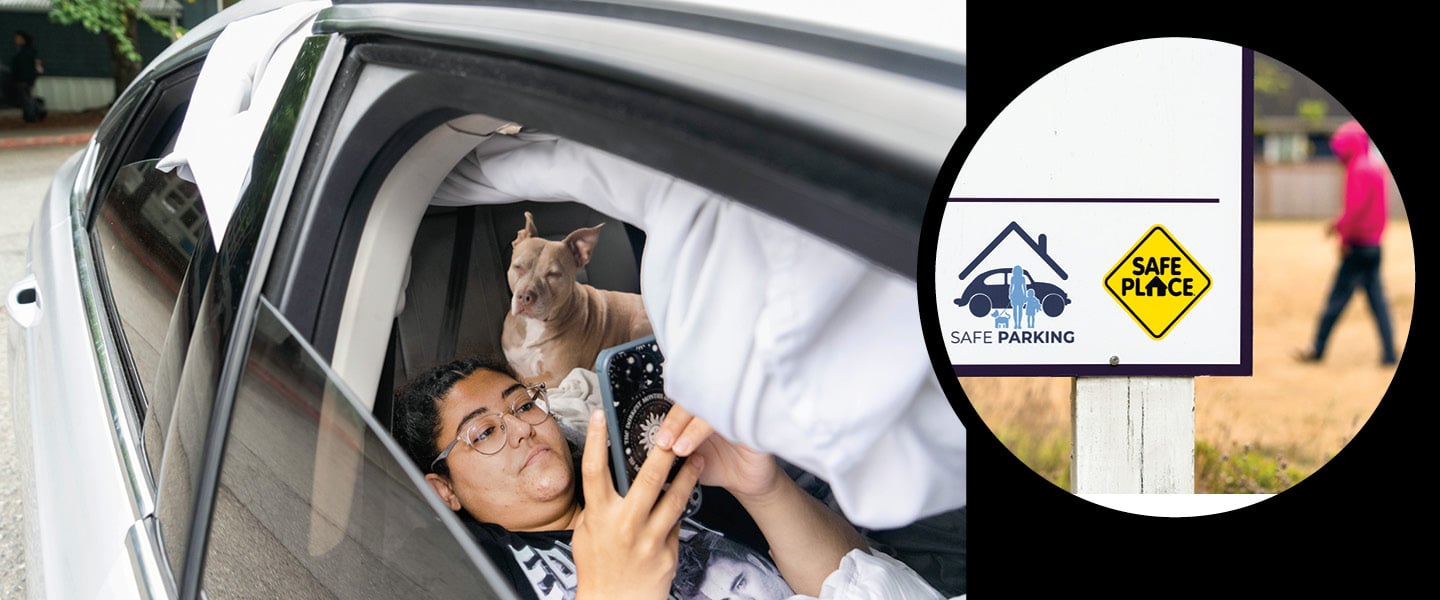Chrystal Audet tried to get comfortable in her “bedroom”—the back seat of her eight-year-old Ford Fusion. September nights are raw in the Pacific Northwest, with sheets of rain that cut to the bone. But Audet had to stretch her legs, so she left a passenger door ajar.
From her own “bedroom” in the front seat, her 26-year-old daughter, Cierra, asked her to close it.
“We have to get out of this,” Audet said to herself as she pulled a comforter to ward off the cold and struggled to fall asleep in a parking lot in Kirkland, Washington.
Audet, 49, earns more than $72,000 a year as a social worker for the Washington State Department of Social and Health Services. But a combination of bad luck, bad debt, and a bad credit score priced her out of her apartment. With eviction looming, she put her furniture in storage last spring and began parking the sedan in the U-shaped parking lot outside a Methodist church.
Chrystal Audet tried to get comfortable in her “bedroom”—the back seat of her eight-year-old Ford Fusion. September nights are raw in the Pacific Northwest, with sheets of rain that cut to the bone. But Audet had to stretch her legs, so she left a passenger door ajar.
From her own “bedroom” in the front seat, her 26-year-old daughter, Cierra, asked her to close it.
“We have to get out of this,” Audet said to herself as she pulled a comforter to ward off the cold. She struggled to fall asleep in a parking lot in Kirkland, Washington.
Audet, 49, earns more than $72,000 a year as a social worker for the Washington State Department of Social and Health Services. But a combination of bad luck, bad debt, and a bad credit score priced her out of her apartment. With eviction looming, she put her furniture in storage last spring. She began parking the sedan in the U-shaped parking lot outside a Methodist church.

